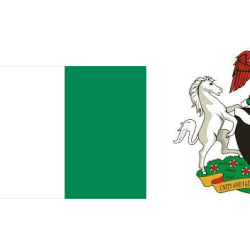The creation of present-day Nasarawa State owes its origin to the British creation of Nasarawa Province in 1902. Nasarawa was at first called the Lower Benue Province in 1900, but after the formal submission of the Emir of Nasarawa in 1902, the name of the Province was changed to Nasarawa and the capital was moved from Akpanaja to Nasarawa town.

Following the reorganisation of the Northern Provinces in 1926, Plateau Province was created out of the Provinces of Muri, Nasarawa and Bauchi. Some of the groups that were formally under Nasarawa Province were transferred to Plateau while others were incorporated into Benue Province. In May 1967, Benue and Plateau Provinces were merged to form Benue-Plateau State, one of the twelve states that the Military Administration of General Yakubu Gowon divided Nigeria in place of the four previously existing regions. When the country was further divided into nineteen states in 1976, Benue-Plateau State was split into Plateau and Benue States. In October 1996, Nasarawa state was created out of the western half of Plateau State with its capital in Lafia.
Nasarawa State is centrally located in the Middle Belt region of Nigeria. The state lies between latitude 7° 45′ and 9° 25’ N of the equator and between longitude 7° and 9° 37′ E of the Greenwich meridian. It shares boundary with Kaduna state in the North, Plateau State in the East, Taraba and Benue states in the south while Kogi and the Federal Capital Territory flanks it in the West. The state has a total land area of 26,875.59 square kilometers and a population of about 1,826,883, according to the 2006 population Census estimate with a density of about 67 persons per square kilometer.
Nasarawa State is made up of thirteen Local Government Areas, namely, Akwanga, Awe, Doma, Karu, Keana, Kokona, Lafia, Nasarawa, Nasarawa Eggon, Obi, Toto, Wamba and Keffi. The people of Nasarawa state includes among others; the Gwandara, Alago, Eggon, Gbagi, Egbira, Migili, Kantana, Fulani, Hausa, Kanuri, Tiv, Afo, Gade, Nyankpa, Koro, Jukun, Mada, Ninzam, Buh, Basa, Agatu, Arum, Kulere, and also settler groups like the Igbo, Yoruba and Hausa.
Reference: nasarawastate.gov.ng/about-nasarawa-state















